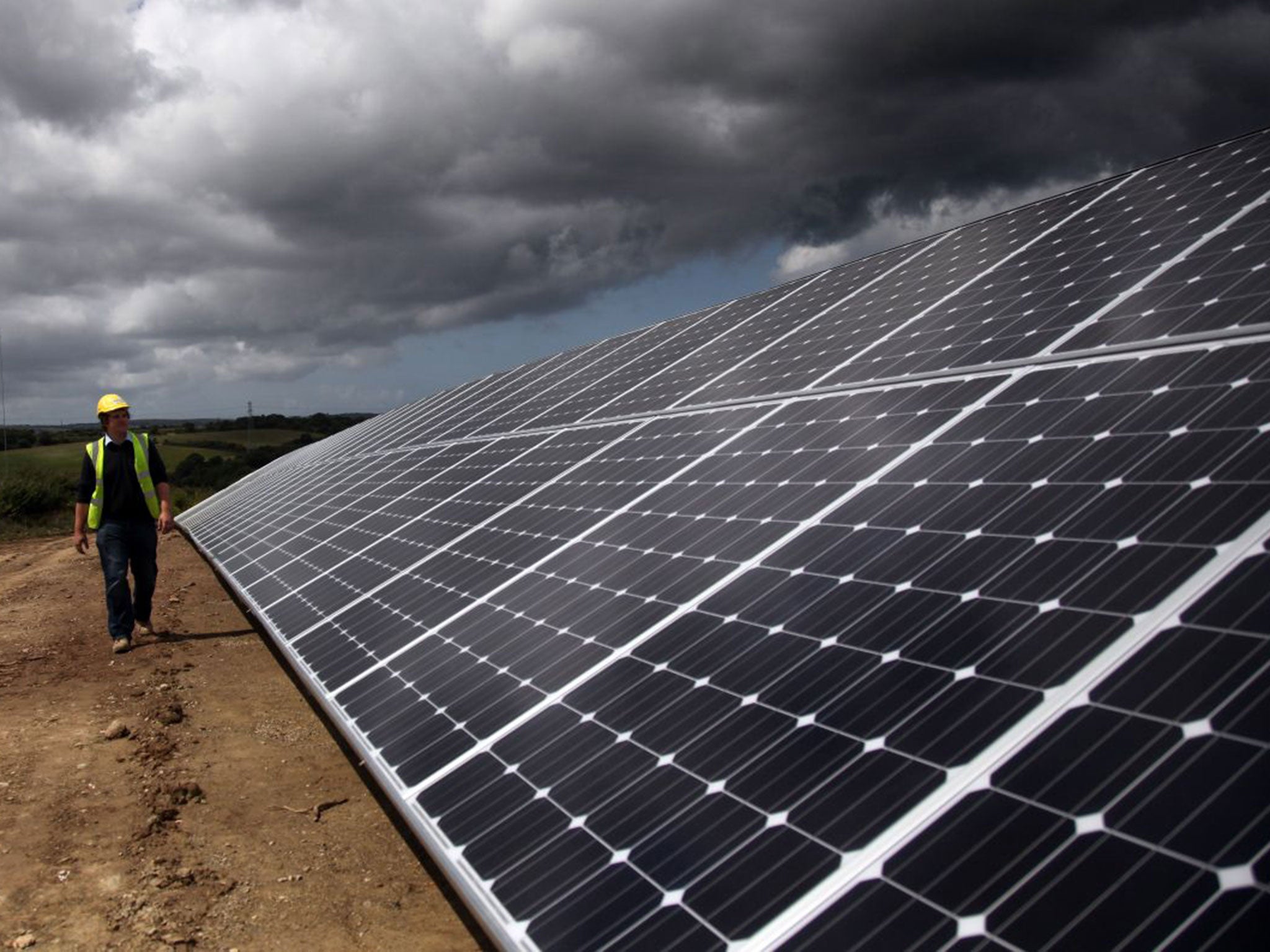Breakthrough in solar panel manufacture promises cheap energy within a decade
Technical advance based on edible salt overcomes need to use toxic agents

Your support helps us to tell the story
From reproductive rights to climate change to Big Tech, The Independent is on the ground when the story is developing. Whether it's investigating the financials of Elon Musk's pro-Trump PAC or producing our latest documentary, 'The A Word', which shines a light on the American women fighting for reproductive rights, we know how important it is to parse out the facts from the messaging.
At such a critical moment in US history, we need reporters on the ground. Your donation allows us to keep sending journalists to speak to both sides of the story.
The Independent is trusted by Americans across the entire political spectrum. And unlike many other quality news outlets, we choose not to lock Americans out of our reporting and analysis with paywalls. We believe quality journalism should be available to everyone, paid for by those who can afford it.
Your support makes all the difference.A breakthrough in the production of solar cells will make the next generation of solar panels cheaper and safer, and promises to accelerate the development of solar energy over the next decade, scientists said.
A technical advance based on an edible salt used in the manufacture of tofu could revolutionise the production of future solar panels to make them less expensive, more flexible and easier to use than the current models seen on millions of roofs across Britain.
Researchers believe they have found a way of overcoming one of the most serious limitations of the next generation of solar panels, which are based on toxic cadmium chloride, by simply adding magnesium chloride, an abundant salt found in seawater.
A study has shown that the solar cells produced with magnesium chloride – which is also found in bath salts as well as used to coagulate soya milk into tofu – work just as efficiently as conventional cadmium cells but at a fraction of the cost and with much lower toxicity.
“We certainly believe it’s going to make a big change to the costs of these devices. The cost of solar is going to match fossil fuels eventually but this is going to get us there quicker,” said Jon Major of the University of Liverpool, who led the research.
“Magnesium chloride is incredibly low-cost and it’s simply recovered from seawater. It’s used to de-ice roads in winter and it’s completely harmless and non-toxic. We’ve managed to replace a highly expensive, toxic material with one that’s completely benign and low cost,” Dr Major said.
About 90 per cent of the solar panels currently in use are made of photovoltaic cells composed of silicon semiconductors, which convert sunlight directly into electricity. However, silicon is not good at absorbing sunlight which is why the next generation of PV cells will be based on a thin coating of cadmium telluride, which absorbs sunlight so well that it only needs to be about one hundredth of the thickness of silicon.
However, although cadmium telluride is seen as the future for solar energy, it is potentially dangerous after it is “activated” with cadmium chloride, a critical step in the manufacturing process that raises the efficiency of converting sunlight to electricity from about two per cent to 15 per cent or more.
The Liverpool team attempted to find an alternative to cadmium chloride in the activation step and discovered that it could be done just as well with magnesium chloride, which they sprayed onto a test sample of cadmium telluride with a model aircraft spray gun they bought for £49.99, Dr Major said.
In a study published in the journal Nature, the researchers demonstrated that the efficiency of the resulting photovoltaic cells made from cadmium telluride and magnesium chloride were on a par with commercial cadmium telluride cells that had been activated with toxic cadmium chloride.
“We have to apply cadmium chloride in a fume cupboard in the lab, but we created solar cells using the new method on a bench with a spray gun bought from a model shop,” Dr Major said.
“Cadmium chloride is toxic and expensive, and we no longer need to use it. Replacing it with a naturally occurring substance could save the industry a vast amount of money and reduce the overall cost for generating power from solar,” he said.
It is not possible to estimate how much cheaper the new solar cells will be, Dr Major said, but magnesium chloride is about one per cent of the cost of cadmium chloride. In addition, waste disposal will be far easier and cheaper with a product based on a non-toxic salt, he said.
Asked why the solar power industry had not thought of using magnesium chloride before, Dr Major said: “We genuinely don’t know. The only reason we can suggest is that cadmium chloride works well so it may be a case of ‘if it’s not broke, why is there a need to fix it?’”
Jeremy Leggett, chairman of the renewable energy firm Solarcentury, said that the development is exciting because it promises to make an already competitive industry even more competitive with conventional sources of energy, such as fossil fuels.
“Their costs are coming down so fast that they are already knocking the business models of utilities into what some analysts call a ‘death spiral’. Imagine, then, what will happen if developments such as the one described in the new research come to market,” Dr Leggett said.
Join our commenting forum
Join thought-provoking conversations, follow other Independent readers and see their replies
Comments